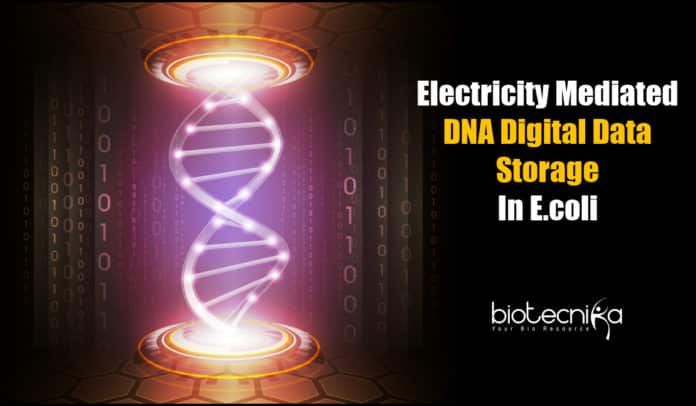Columbia University’s Researchers Accomplish Increased DNA Digital Data Storage
Columbia University’s elite group of researchers have established a method to enable DNA strands to keep more information. In their research, published in the journal Science, the team used tiny levels of electric power to DNA strands to facilitate coding more data than was feasible with conventional approaches.
For a number of years, scientists have been seeking means to append extra storage capacity-requirements for storage are assumed to surpass capacity in the upcoming future because of soaring demands. One such method comprises encoding information into DNA strand-previous studies have demonstrated that it can be possible. In the preliminary phases of such studies, researchers manually tailored DNA strands to append features to represent ones and zeroes. More lately, scientists have applied CRISPR gene engineering technology. Most such researchers employed DNA isolated from the dead animal’s tissue. Currently, scientists have commenced initiatives to shift the studies to live animals as it will persist for a longer period. Abd not limited to the tailored DNA strands-the data appended could possibly be transferred to the next generation, facilitating data storage for quite a long time.

Back in 2017, one more group from Columbia University employed the CRISPR tool to discover a particular signal-in their study, it was the effect of sugar molecules. The addition of sugar molecules leads to plasmid DNA’s gene expressions. Gradually, the amendment process was ameliorated because genetic pieces were incorporated to represent ones and zeroes. Sadly, the unit merely enabled the storage of small chunks of data.
In this new initiative, researchers have enhanced the system by utilizing a small amount of electricity. Their strategy entailed utilizing the CRISPR tool to include genes inside an E. Coli’s DNA strand enabling the cells to enhance the quantity of plasmid generated when subjected to a small amount of current. The expression level is directly proportional to the data levels that can be stored. Employing their newly developed system, the scientists encoded the wording ‘Hello World’ inside the E.coli’s DNA strands and then blended it into an organic soil sample. Researchers observed that they could decipher the message from E.coli after it multiplied. The scientists admit that their method is still in a preliminary phase of trials, however, they intend to explore and enhance the method to boost data storage capacity.
DNA Digital Data Storage






